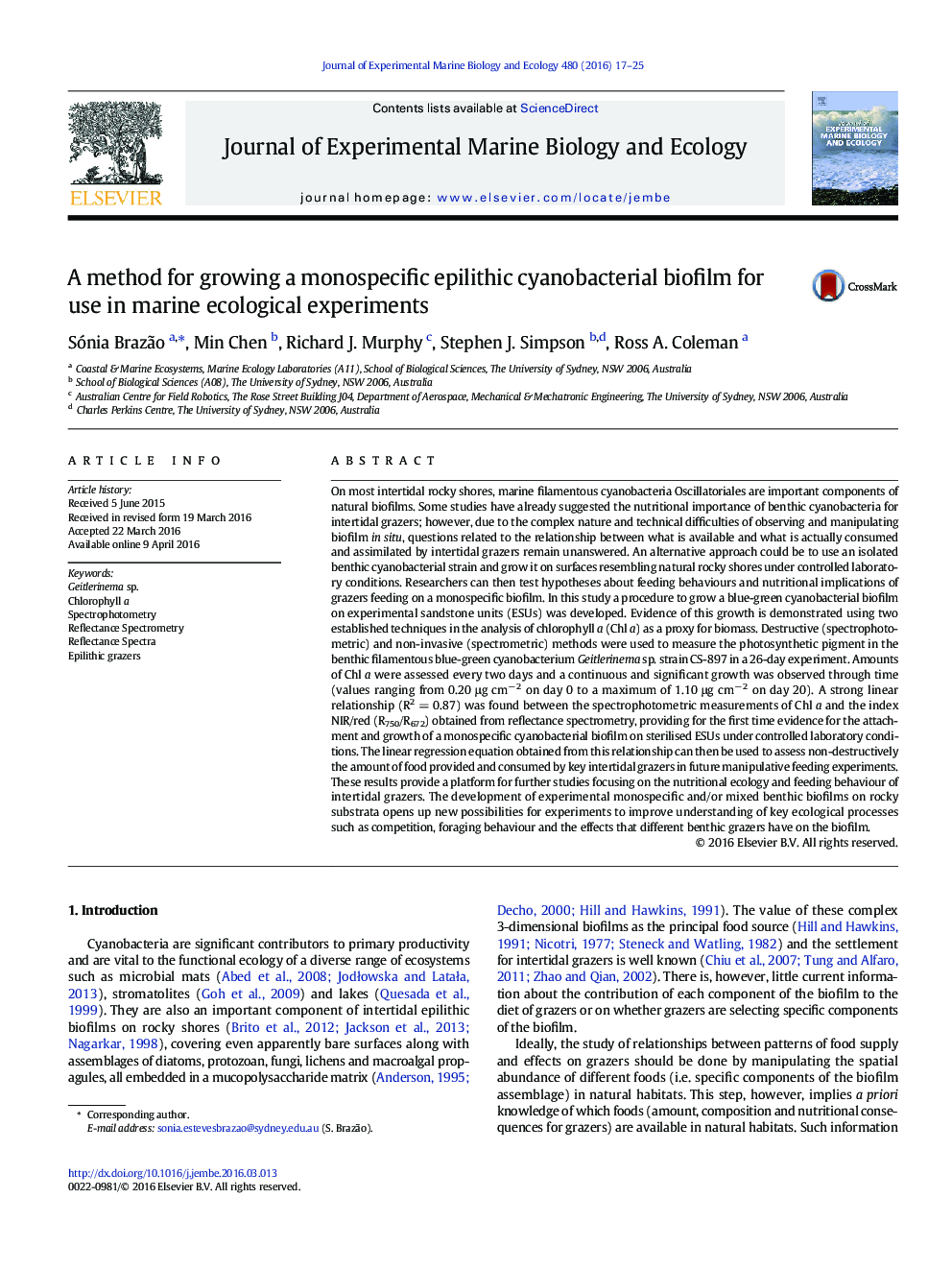| کد مقاله | کد نشریه | سال انتشار | مقاله انگلیسی | نسخه تمام متن |
|---|---|---|---|---|
| 4395248 | 1618395 | 2016 | 9 صفحه PDF | دانلود رایگان |
• A method for growing a cyanobacterial biofilm on sterilised experimental sandstone units is presented.
• The maximum abundance of biofilm achieved was 1.10 μg chlorophyll a per cm− 2.
• Reflectance spectrometry is effective for chlorophyll a in presence of culture medium.
• Results are useful for experiments about grazing, food choice and nutritional value.
On most intertidal rocky shores, marine filamentous cyanobacteria Oscillatoriales are important components of natural biofilms. Some studies have already suggested the nutritional importance of benthic cyanobacteria for intertidal grazers; however, due to the complex nature and technical difficulties of observing and manipulating biofilm in situ, questions related to the relationship between what is available and what is actually consumed and assimilated by intertidal grazers remain unanswered. An alternative approach could be to use an isolated benthic cyanobacterial strain and grow it on surfaces resembling natural rocky shores under controlled laboratory conditions. Researchers can then test hypotheses about feeding behaviours and nutritional implications of grazers feeding on a monospecific biofilm. In this study a procedure to grow a blue-green cyanobacterial biofilm on experimental sandstone units (ESUs) was developed. Evidence of this growth is demonstrated using two established techniques in the analysis of chlorophyll a (Chl a) as a proxy for biomass. Destructive (spectrophotometric) and non-invasive (spectrometric) methods were used to measure the photosynthetic pigment in the benthic filamentous blue-green cyanobacterium Geitlerinema sp. strain CS-897 in a 26-day experiment. Amounts of Chl a were assessed every two days and a continuous and significant growth was observed through time (values ranging from 0.20 μg cm− 2 on day 0 to a maximum of 1.10 μg cm− 2 on day 20). A strong linear relationship (R2 = 0.87) was found between the spectrophotometric measurements of Chl a and the index NIR/red (R750/R672) obtained from reflectance spectrometry, providing for the first time evidence for the attachment and growth of a monospecific cyanobacterial biofilm on sterilised ESUs under controlled laboratory conditions. The linear regression equation obtained from this relationship can then be used to assess non-destructively the amount of food provided and consumed by key intertidal grazers in future manipulative feeding experiments. These results provide a platform for further studies focusing on the nutritional ecology and feeding behaviour of intertidal grazers. The development of experimental monospecific and/or mixed benthic biofilms on rocky substrata opens up new possibilities for experiments to improve understanding of key ecological processes such as competition, foraging behaviour and the effects that different benthic grazers have on the biofilm.
Journal: Journal of Experimental Marine Biology and Ecology - Volume 480, July 2016, Pages 17–25
